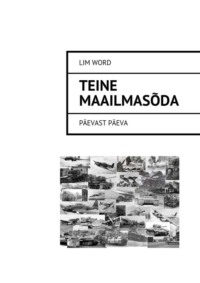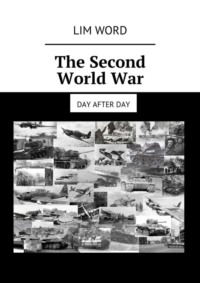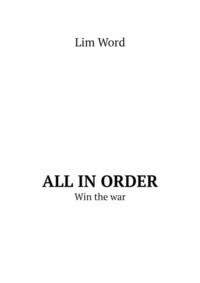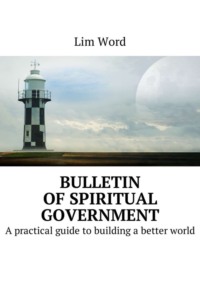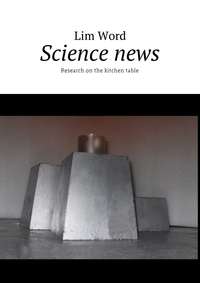
Полная версия
The Settlement Agreement. Make a repost

The Settlement Agreement
Make a repost
Lim Word
© Lim Word, 2018
ISBN 978-5-4490-7054-8
Created with Ridero smart publishing system
The most powerful bureaucratic superpower of our time is, of course, our Russian Federation. Do you want this to always remain so?
Can we free ourselves from the web of constantly hanging by the side, binding the movement of nameless laws?
Let’s review the story through the biographies of significant figures of time; from the leader of the USSR Georgy Malenkov, who came to replace Stalin until our days of life.
Let us answer: why is the largest country in the world so poor and contradictory. What can be done to change the state of things, to make our country a true Paradise under heaven?
VIP-persons of the USSR from Malenkov to Gorbachev
Georgy Malenkov, Nikita Khrushchev
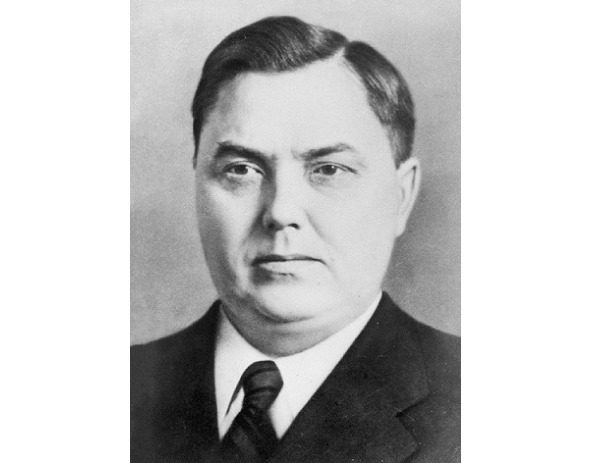
Georgy Malenkov
George Malenkov. Birth – 1901 g, Orenburg, the Russian Empire, … service as a political worker in the young Red Army, rapid career rise; so that, according to some sources, at this Time of Opportunity, Georgy Maximilianovich, 23, almost becomes Lenin’s successor.
Then three years of study at the Moscow Higher Technical School (now named after Bauman) at the Electrical Engineering Faculty, leaving the School, working (no less, for yesterday’s student), technical secretary of the Politburo of the RCP Central Committee, developing and maintaining a personal dossier system. In this post, the semi-engineer, on the instructions of Stalin and personally, Kaganovich, is forced to deal with the “purges” of the Moscow party apparatus – and fulfills the plans set for him according to the number of people killed and buried. In some way, Malenkov manages to stay somewhat aloof from the main person in the country’s Security Authorities, Nikolai Yezhov. That’s why he first – experiencing it, and then read out the report “On the bends.”
In 1948, in particular, Georgy Malenkov participated in the defeat of the Jewish Anti-Fascist Committee (JAC). Recall that the EAC was formed in 1942 in Moscow, directed by S. Mikhoels, he collects for the belligerent USSR 16 million dollars in America (plus medical equipment), 35 million worldwide, but then with increasing popularity and international relations begins to interfere To Stalin.
A year later, on instructions from above, Georgy fabricated the case against the leaders of the Leningrad Regional Committee. Reason – the organization in January 1948 of the All-Russian wholesale fair, in the Northern Capital, without agreement with party workers in Moscow. Any amateur performance under Stalin (with the possible exception of the last two years of the Patriotic War) is punished very, very cruelly. According to the conclusions of the morbidly split mind of Dzhugashvili (and even of the most insane Soviet society), this completely innocent and even very useful undertaking now looks like an attempt to organize a separate (related but, in fact, opposition to the All-Union) Russian Communist Party (RCP).
In addition to all the victims of the regime, about two hundred people are killed.
Malenkov is personally present during interrogations, sometimes even tortures of suspects, but it seems that he himself does not enjoy it. Perhaps that is why, in March 1953, the Chairman of the Council of Ministers read out a report on the exposure of the personality cult; and proposes further to direct the country exclusively collegially. However, this performance of a special impression on anyone except Khrushchev, judging by the transcript of the meeting, does not produce.
In fact, the call of Malenkov – the second or third, since the last (actual) electoral Zemsky Sobor (1613) or the Duma of the Fourth Convocation (1912) attempt to introduce the principle of a regulated (civil society) succession of power.
While Nikita Sergeyevich rallies around the young cadres of the party apparatus (not forgetting to help them financially), Malenkov, perhaps remembering his own past sins, is more engaged in charity. The food tax for the villagers is cut in half. Past arrears are forgiven. The plan for the five-year plan is corrected in the direction of a sharp increase in the output of consumer goods. The issuance of passports to collective farmers begins.
“Comrade Malenkov came, he gave bread and blink.”
Georgiy Maximilianovich “reigns” for four months rightfully, until September 1953, remains chairman of the Council of Ministers for another two years, then he is criticized, he drops to the minister of power stations (although he remains an important post in the Presidium). For lack of a better company, he contacts Molotov, Kaganovich (“Shepilov, who joined them with the Minister of Foreign Affairs”); and so, in spite of himself, is not very democratic, he is trying to remove Khrushchev’s First Secretary from the affairs. However, Molotov and Kaganovich – people who have far surpassed Malenkov in drawing up the “execution lists” (including the higher officers of the Red Army) are not acceptable to everyone in the Central Committee. Through a member of the Politburo E. Furtseva (according to rumors) what is happening becomes known to all interested parties. Marshal G. Zhukov, himself almost repressed by Stalin in the postwar period, in full accord with Khrushchev, on military aircraft, brings from all parts of the country high-ranking party workers. The quorum formed at the Plenum of the Central Committee with some considerable power support of the Marshal of Victory, displaces Malenkov from a high post.
Some reasonable collegiality, a tandem of almost equal: Malenkov-Khrushchev, crumbling. Remaining as the sole ruler, who no longer wants to hear anyone’s objections, Nikita Sergeyevich himself becomes a mini-Stalin, and is completely peddling. By 1958, wishing to “erase” the mentality of the village from people, he liquidated his personal land plots (there was one tithe) on collective farms. There are several more blows to the psychology of the toiler-on-the-ground, including persecution of the church: they are tolerated and hushed up by the Soviet media down to the bias of the secretary general.
The former minister is the main link of the USSR-China relationship. Other relations, except as the only direct line of Mao-Malenkov, have not been developed for these two greatest totalitarian powers. In this system everything is built on friendship, inner feelings and unpredictable vagaries of a very narrow circle of people. Therefore, with the departure of Malenkov, the friendship of the Soviet Union and the Celestial Empire practically ends (1957).
…Now Georgiy Maximilianovich is the director of the hydropower plant on the Irtysh River in Kazakhstan. He is an exemplary businessman, but in conversations with his staff, he often allows himself criticism of Nikita Khrushchev. Therefore, in 1961 he was expelled from the Communist Party, and then sent to retirement.
Malenkov lives in Moscow, as the most ordinary person, does not appear in the Kremlin, he is bought in a special distributor for party workers, he goes by train to his favorite dacha in Kratovo. He turns to the Orthodox faith, sings in the choir (a place near the altar) in the church. He leaves the life of the earth in the already deeply perestroika in 1988. George – the last of the leaders of the USSR, who were in the nearest circle of I. Stalin.
Private life. Wife – Valery Alexeevna, rector of the Moscow Power Engineering Institute, four children.
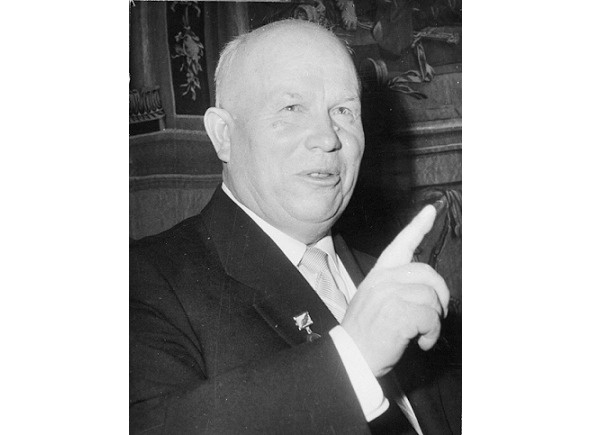
Nikita Khrushchev
Nikita Khrushchev. Birth – 894, with. Kalinovka Kursk province (region) … work as a shepherd, a pupil of a locksmith in a coal mine, … election as a workers’ deputy to the Soviets. In 1918 Khrushchev headed the detachment of the Red Guard, then became a political worker. After studying at the working faculty of Donetsk, at the insistence of his protector, Lazar Kaganovich, Nikita Sergeyevich entered the Industrial Academy of Moscow. Politics attracts the future of the First Secretary more than knowledge, and in 1934 Khrushchev succeeds his patron as head of the Moscow party organization.
In 1938, Nikita Sergeyevich became the first secretary of the Central Committee of Ukraine, he restored the party apparatus destroyed by the Stalinist cleansing (although he can not resurrect people, of course), more or less copes with the tasks of an economic nature. The question of transformations on the Western Ukraine, partially Belarussian territories (1939), seized from Poland (captured in 1920, largely polonized), is also decided strictly in the spirit of the times. About 120 thousand, seeming not quite loyal residents of the annexed lands, are evicted to Siberia, Kazakhstan, etc.; some people perish. Other ways to pacify the wavering citizens (raising the standard of living, frank dialogue), the system simply does not see. Of course, during the Great Patriotic War this decision of the Secretary (besides many other factors) contributes to the formation of the Ukrainian Insurgent Army (banned in Russia).
In 1941—42 years. member of the military council of the Southwestern Front, Khrushchev, unthinkingly obeying Stalin’s instructions, becomes one of the perpetrators of the encirclement of Soviet troops near Kiev, and in the Barvenkovskaya Zapadne, during the unsuccessful offensive of the Red Army near Kharkov. However, in the Battle of Stalingrad, at the forefront, he manages to patch up his reputation somehow.
After the war, Khrushchev returned to his previous position.
In 1946, partly because of the drought, in Ukraine (and the USSR as a whole) yields are somewhat reduced. However, at the beginning of April 1946 the Soviet Union assumed the obligation to supply grain to France, other countries that became the USSR’s satellites (or potentially conceivable in this role), up to solar Albania. Drought, devastation, the death of citizens of the Country of Soviets, etc., should not somehow influence Stalin’s plans for a wise plan. The grain is scraped clean. But, nevertheless, this System is not so cruel as it is deaf and blind. In total, over the next 18 months, the state (and, above all, considered “unreliable” Western Ukraine) is losing 800,000 people.
Khrushchev himself, the Secretary of the Central Committee of Ukraine, shows the former inhuman initiatives, with its submission, the Supreme Council adopts a decree “On eviction to remote areas of persons maliciously evading employment in agriculture …". About fifty thousand “well-off” collective farmers, and members of their families, formally, by decision of collective farms, are evicted to remote areas of the country.
All free and, although some hidden from the eyes of the authorities, plots of land are used by residents of large cities, as well as by villagers, for planting nurse of the Soviet land – potatoes.
In 1953, in tandem with G. Zhukov, Khrushchev (already a member of the Central Committee of the USSR), it was possible to displace L. P. Beria from all posts, to arrest and destroy. Minister of the Interior Lavrenty Beria is considered a good economic man, a pragmatist (which is good even if the people were especially useful for the case), but he is the only one from the Politburo who personally took part in the torture of suspects and murders (and not only detachedly observed the “process”). This personal factor undoubtedly played a significant role in relation to other members of the Central Committee towards L. Beria.
In 1954, Khrushchev, perhaps as if trying to rehabilitate himself for his past repression in Ukraine, bypassing the necessary approvals, presents the Ukrainian SSR and its party apparatus with a kind of “buy-back” – the Crimea peninsula. Alternative version – the initiator and conductor of the decision is the Chairman of the Council of Ministers Georgy Malenkov. “Fateful” meeting of the Presidium of the CPSU Central Committee on January 25, 1954 is exactly under his leadership. The first secretary of the Crimean regional committee, P. Titov, who does not agree with such a cunning maneuver, with a decrease is transferred to the post of Deputy Minister of Agriculture of the USSR.
At the same time, the NKVD is divided into the Ministry of Internal Affairs and the KGB. Both these organizations, ideally, should “keep an eye on each other”. The idea may be true, however, however, full control over such important state formations should be done not by themselves, but directly, containing them for their needs, the people. In the absence of such democratic oversight, organizations only compete in muscle building (the Interior Ministry, the Internal Troops, the KGB – border troops, etc.), in the struggle for leadership, and, about its main task – protecting the interests of the likes of us, a good reader, citizens, gradually forget.
One of Khrushchev’s ideas is the development of virgin lands in Kazakhstan. In part, this movement is born as an operation to camouflage traffic flows to the Baikonur rocket in the rush, but soon acquires an independent value. About 50 million hectares of steppe are being plowed up. In a certain period, virgin land supplies the country up to 40% of the total grain. However, because of the poorly developed system of roads, most of it does not reach the mouths of direct consumers. After three or four years, the yield is sharply reduced, and the plowed layer is swept dry.
As an operation for misinformation, “Celina” also has not a very high value. Yes, the US is launching its satellites somewhat later than the Soviet ones. However, on board the “Americans” is the best in the world of photo equipment. With her help, Baikonur (originally, “Tyura-Tam”), as well as many other strategic military facilities of the USSR, are deprived of the cover of secrecy.
Even after everything that has already been done, quite broad masses of people, especially ardent youth, want to create something new and bright. In the same Kazakhstan, at the construction of Temirtau (“Kazakhstan’s Magnitogorsk”), at the call of the soul and the Komsomol vouchers, 25 thousand people gather. In the tent camp without any amenities, but with interruptions in the supply of food, water, and complete “ignore” the leaders of workers’ needs, the enthusiasm is somewhat cooling. In July 1957 a new group of builders arrived – citizens of socialist Bulgaria. Beginners settle in stone houses, provide all conditions of existence. The ordinary Soviet workers who came for breakfast are asked to wait until the Bulgarians finish eating… This all completely overflows the cup of patience. Several hundred people are smashing the dining-room, the department store, scattered around the neighborhood, and beat up the cops who fell on their way. Soldiers who are drawn to the scene of the shooting simply refuse to shoot. Three days later, the cadets of local military schools are doing this work for them. According to official figures, 11 people are dying. Later, the most justified Soviet courts in the world sentenced five more to be shot.
Several thousand former enthusiasts of the “Komsomol construction”, using the vehicles they have seized, from Temirtau run away. The “Kazakh Magnitogorsk” and the Bulgarian builders are leaving forever.
The remaining proletarians, after they were given more or less tolerable conditions of existence, go to work, repair the fences and buildings destroyed by them.
In 1961, something like this, although much on a smaller scale, is repeated in Krasnodar. … Khrushchev’s money reform has been going on for two weeks already. The focus with a decrease in the gold content of the ruble fails, the precious metal, products and goods rise in price by two or three times without any apparent reasons. To eat, the soldier sells the stolen from the warehouse cap and boots. The military patrol detains the soldier, but numerous sympathizing citizens demand the release of a starving soldier. Later, the major figures of unrest become the reserve major, who became a laborer and fisherman, whose modest catch was confiscated by “people’s” combatants for “illegal trade.”
In the end, an accidental man dies, the building of the regional committee of the CPSU is subjected to rout and plunder. The excitement subsides on its own. Later, several activists receive terms of imprisonment from 3 to 10 years.
All these disturbances become known to the First Secretary; but neither he nor his immediate entourage change anything in the adopted course, “in my head” is not going to. Information about the state of things is obsequiously served as “tricks of hooligans”, “drunken workers”, etc. The System still has a reserve of its own, little dependent on the people’s strength.
The beginning of June 1962 in Novocherkassk, Rostov Region, was marked by mass performances by workers of the local electric locomotive plant. The rate of production increases by 30%, so does the real wage. To the question “What are we going to live on”, the director of the enterprise (pointing to the tray being sold near the pies shop) answers: “We used to eat pies with meat, now you’ll eat with the liver.” The result of a witty joke is a factory seized by workers, the closure of a strategic railway line, a citywide rally.
Instead of developing a clear dialogue, the secretary of the local regional committee simply reads from the balcony the appeal of the Central Committee of the CPSU, published earlier in the press.
The crowd is sent to the center of Novocherkassk, relatively freely bypassing the tanks on the road. General M. Shaposhnikov refuses to use the armored cars of his units against the workers. Moreover, he orders the motorized rifles to discharge the carbines and machine guns, hand over ammunition. This decision allows him to keep a good name, the lives of thousands of people, but (three years later, after writing letters to Soviet writers, Komsomol committees and rectors of universities) helps to leave his post.
A chain of soldiers of Internal Troops (VV) with automatic weapons is built near the building of the city party committee. Someone Azizov opens fire, and kills the first worker. To the place or not, but note that in Central Russia, the military units are usually equipped with draftees from the so-called southern national republics (or, generally speaking, without any nationality). It is easier to suppress protests of the “state-forming people”. The first volley is directed over the heads – but so, under the bullets, the children from the orphanage are sitting on the trees. Shaken by childish shouts, the crowd rushes forward, under gunfire, but, unable to withstand the dense fire, dissipates. According to official figures, 26 people die. Another 11 participants in the riots, even if they were just in the front ranks of people’s demonstrators, are identified by the KGB on operational video materials, and are shot later.
…Khrushchev loves corn. This crop is really, very fruitful and useful. However, even after the Secretary’s report “On the cult of personality” in 1956, the complex of the authoritarian System, in all its most dangerous metastases, is not exhausted. Objection to the Chief, somehow humanly discourse with him is still dangerous – although now it is not your life, but only your position. The main thing here, perhaps, is thoughtless imitation. So, “just in case”, without going into significant details, the leaders on the ground bring the idea of the First Secretary to the utter absurdity. Almost all available acreage is populated by the “Queen of the Fields”, up to and including the territories of the Far North.
All this, at last, bores everyone. The murmur of the people, albeit with an unacceptable, painful delay, is translated into more or less distinct actions of influential functionaries. In 1964, the rest of the rest in Pitsunda NS Khrushchev Presidium of the Supreme Council removed from power. The idea is like this, “just in case” to arrange for the former general secretary of a car accident, a new, not so carnivorous, more collegiate leadership, deviates. At least this time the Central Committee preserves the face before its citizens and the international community. Nikita Sergeyevich lives in the country, under house arrest, grows gorgeous tomatoes, and listens on the radio Voice of America. In 1971, he peacefully dies from cardiac arrest.
Private life. He is married three times, six children. The first son, a fighter pilot on the Yak-7, a senior lieutenant, dies in aerial combat (Kaluga region, 1943).
…Anyway, Khrushchev is a step forward in comparison with Stalin. Everything, as we know, should be judged solely by the fruits. Arguments in the style: “But, after all, I wanted something different, special circumstances emerged” – in the calculation, they are justly not accepted. At the First Secretary people (here and there) receive a small amount of useful proteins and vitamins. Stalin, after only three years after a satisfying, and even prosperous NEP, kills at least 4 million people with mass migrations, famine, and, after another five-year period (peak of repression) – a million, with bullets and torture, in the camps and cellars of the NKVD. We do not know what else Joseph could think of at the end of the sixties, so as to amuse his old age, he remains alive. Under Khrushchev, there is no war (suppression of the Hungarian fascists in 1956 does not count) – with Dzhugashvili there are four of them (including the Korean one, already balancing on the verge of nuclear confrontation). Nikita Sergeyevich admits the death of several dozen people in Novocherkassk – under Joseph Vissarionovich, the scope of peasant uprisings (1929—1932) reaches the scale of the second civil war.
Third Secretary General – Leonid Brezhnev is the next small step towards the well-being of the USSR and even, perhaps, of all mankind.
Workers as leaders: Ivan Likhachev, Andrei Stakhanov

Ivan Likhachev
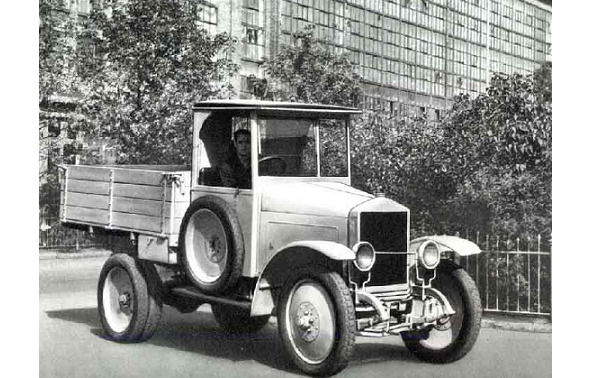
The very first Soviet truck

ZIS-5, the legendary domestic truck
Ivan Likhachev. Birth – 1896, with. Ozers of the Tula region… The end of the village school, work as a mechanic at the Putilov factory… during the First World War – a service by a sailor in the Baltic Fleet. From 1917 to 1921 years. Likhachev is a commander in parts of the Red Army, and even an employee of the Cheka. Further – studying at the Mining Academy and the Leningrad Electromechanical Institute. Getting too many, not always applicable in practice, knowledge will upset the future People’s Commissar. He leaves the university and, at the behest of the Communist Party, heads the Moscow Automobile Plant (1926). The plant was founded in 1916, before the final establishment of the Soviet government, it was able to produce about 1,300 Fiat cars. The first achievement of MAZ in the USSR – the release in November 1924 of ten one-and-a-half truck AMO-F-15. It is interesting that the conveyor “American”, even with the delivery of Soviets from across the ocean, costs ten times cheaper than it, manufactured on the stalks of the domestic analogue.
From a small and poorly equipped enterprise, in fact – large repair shops, the 30-year-old director creates an auto giant very quickly. Ivan visits the factories of Henry Ford in America, buys Buick, brings it to the capital, sorts it out in parts, introduces many technological innovations to the ZIS (since 1931 – the Stalin Plant). In the same year, based on the American Autocar-5S, AMO-3 was created, the first full-sized truck in the USSR. Likhachev personally participates in the Moscow-Leningrad motor rally. In 1934 the volume of output of cars of various modifications reaches 100 000 per year.
In 1939, Likhachyov was appointed a People’s Commissar of the average industry of the USSR. What is going wrong is not so with scrupulous “execution of government decisions” for “part of compliance with the discipline” in production, and Ivan Alekseevich returned to the plant. The main idea of the automaker is “initiative from below at all levels”. The output of cars reaches 150,000 per year. In October, the plant is evacuated to the Urals, where several powerful high-tech enterprises of various profiles are created on its basis.





